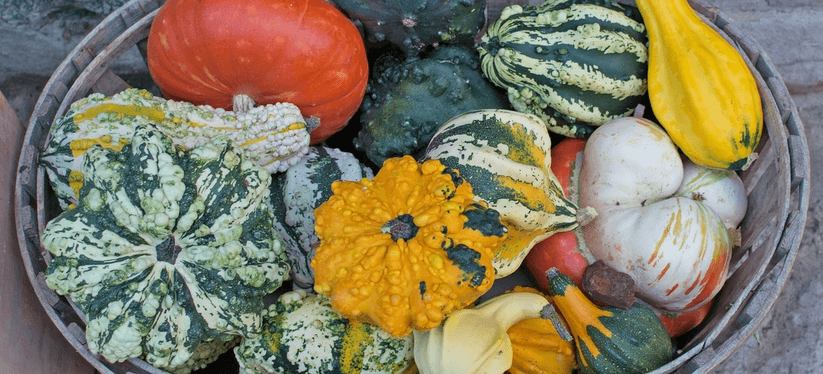
Have you tried Ghee? It’s creamy, it’s rich, it’s delicious! Ghee is clarified butter, the pure milk fat that is rendered by separating the milk solids and water from the butterfat. It’s made by melting butter and skimming the fat off the top.
Ghee has been used in Indian Ayurvedic cooking for thousands of years. And, just as we at Blum Digital, LLC believe that Food is Medicine, Ghee in Indian culture is seen as an aid for digestion, ulcers, constipation, and the promotion of healthy eyes and skin. It can be found in Indian beauty creams and is used to treat skin conditions.
“Ghee contains butyrate a short chain fatty acid found in the gut that is incredibly beneficial not only to the gut but to the entire body,” explains Mary Gocke, Director of Nutrition at Blum Digital, LLC. “Cutting-edge research suggests, among many things, butyrate can be used in the prevention and treatment of cancer. There are very few food sources of butyrate, Ghee is one of them.”
You can enjoy ghee in any way you would butter. From cooking to spreading it on gluten-free bread.
5 Reasons to Make the Switch to Ghee
1. Ghee Helps Strengthen the Digestive Tract — Ghee is high in butyrate, a short-chain fatty acid that reduces inflammation and helps balance the immune cells in your gut. According to Susan Blum, MD, in her book, The Immune System Recovery Plan, Ghee strengthens the intestinal lining, and improves the health of the cells that line the entire digestive tract, including the stomach, colon and small and large intestines. (1)
2. People with Dairy Allergies or Sensitivities Can Enjoy Ghee — Milk is comprised of two proteins — whey and casein. In the process of making ghee, these proteins are removed through skimming and straining, rendering it lactose and casein-free. Those with severe dairy allergies should refrain because ghee is not dairy free, but those with sensitivities or intolerances are usually fine.
3. Ghee Protects the Heart — Researchers found in a rural population of India a significantly lower prevalence of coronary heart disease in men who consumed high amounts of ghee. (2) Other researchers (3,4,5) corroborate these findings and further demonstrate in lab studies that ghee decreases serum cholesterol and triglycerides. They found, in fact, that arachidonic acid, a key inflammatory intermediate in the process of atherosclerosis, was decreased by 65% in serum lipids when ghee was used as the sole source of fat. (3)
4. You Can Cook With Ghee — Ghee has a higher smoke point, higher than nearly any other fat you might cook with — at 486 degrees, it is even higher than coconut oil! Smoke point is important because that is the temperature that an oil begins to degrade and create free radicals – those carcinogenic, unstable molecules that damage cells and cell membranes. Free radicals adversely alter lipids, proteins, and DNA and trigger a number of diseases and are associated with the development of conditions like atherosclerosis and cancer. (6)
5. Ghee Can Help You Lose Weight — Studies demonstrate that Conjugated Linoleic Acid (CLA), an Omega-6 fatty acid that naturally occurs in dairy and beef, has been found to reduce weight gain and decrease fat mass. It also has been shown to enhance immunity while also reducing inflammation. (7) One study, in particular, demonstrated that CLA among overweight adults significantly reduced body fat over 6 months and prevented weight gain during the holiday season. (8)
Ghee can be found in most health food stores as well as many specialty markets. Make sure the container says grass fed or pasture-raised.
Want to make your own? It’s easy! Check out the recipe HERE.
References
1. Blum, S. (2013). The Immune System Recovery Plan. New York, NY: Scribner.
2. Gutpa R., Prakash H. (1997) Association of dietary ghee intake with coronary heart disease and risk factor prevalence in rural males. J Indian Med Assoc. Mar;95(3):67-9, 83.
3. Sharma, H., Zhang, X., & Dwivedi, C. (2010). The effect of ghee (clarified butter) on serum lipid levels and microsomal lipid peroxidation. Ayu, 31(2), 134–140. https://doi.org/10.4103/0974-8520.72361
4. Kumar, M.V., Sambaiah, K., Lokesh, B.R. (1999) Effect of dietary ghee—the anhydrous milk fat, on blood and liver lipids in rats. The Journal of Nutritional Biochemistry, 10(2), 96-104.
5. Kumar, M.V., Sambaiah K, Lokesh B.R (2000) Hypocholesterolemic effect of anhydrous milk fat ghee is mediated by increasing the secretion of biliary lipids. The Journal of Nutritional Biochemistry, 11(2), 69-75.
6. Lobo, V., Patil, A., Phatak, A., & Chandra, N. (2010). Free radicals, antioxidants and functional foods: Impact on human health. Pharmacognosy Reviews, 4(8), 118–126. https://doi.org/10.4103/0973-7847.70902
7. Pariza, M.W. (2004) Perspective on the safety and effectiveness of conjugated linoleic acid. The American Journal of Clinical Nutrition. 79(6), 1132S-1136S.
8. Watras, A.C., Buchholz, A.C., Close, R.N., Zhang, Z. Schoeller, D.A. (2007) International Journal of Obesity 31, 481-487.






